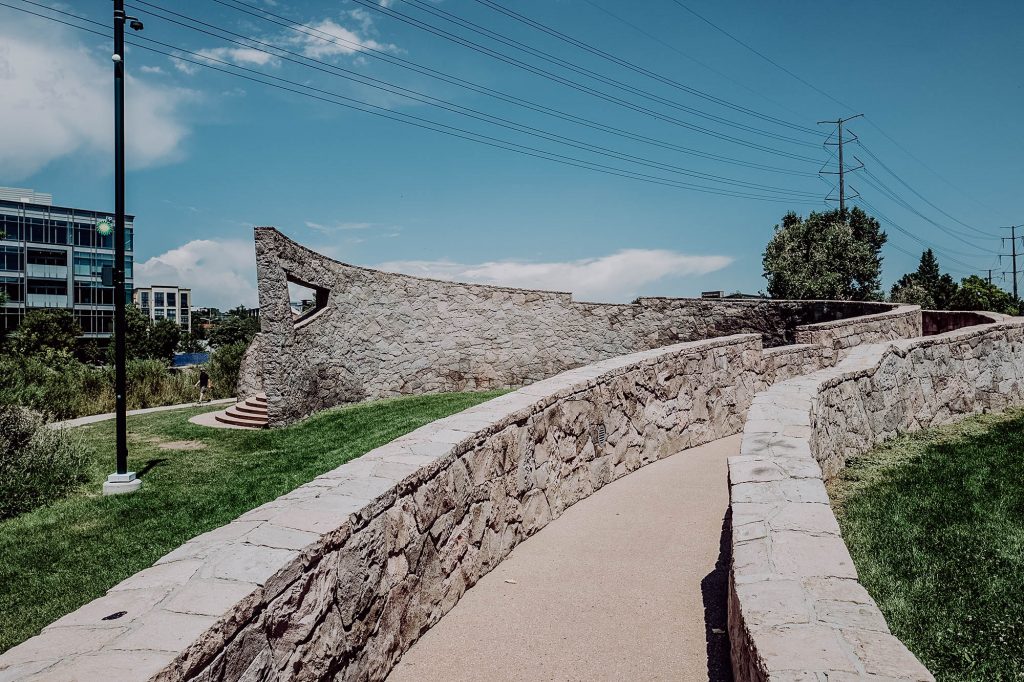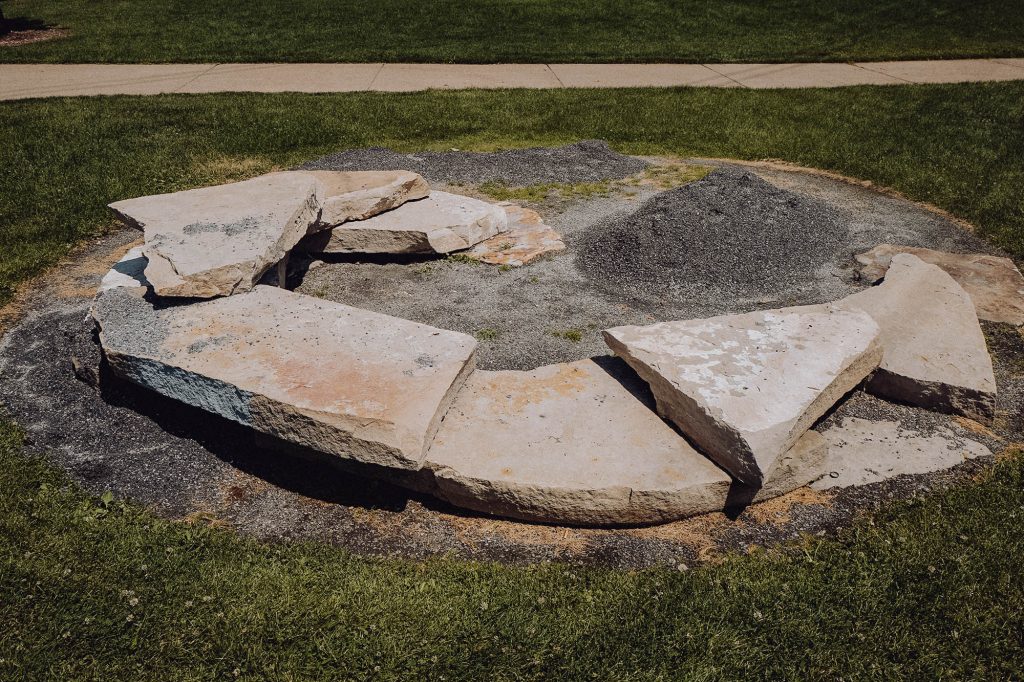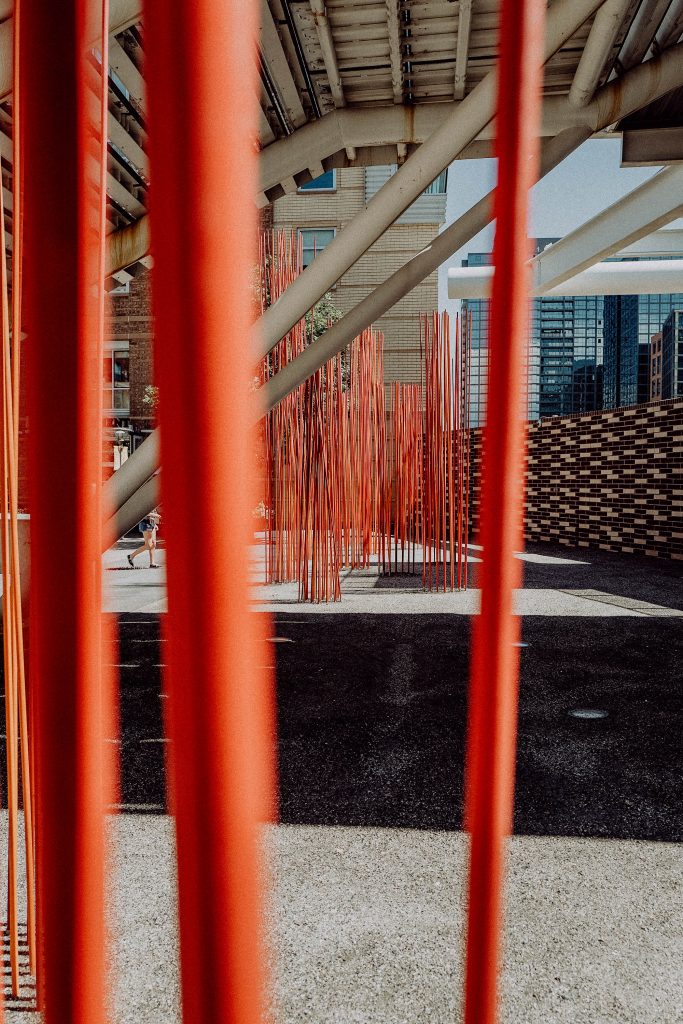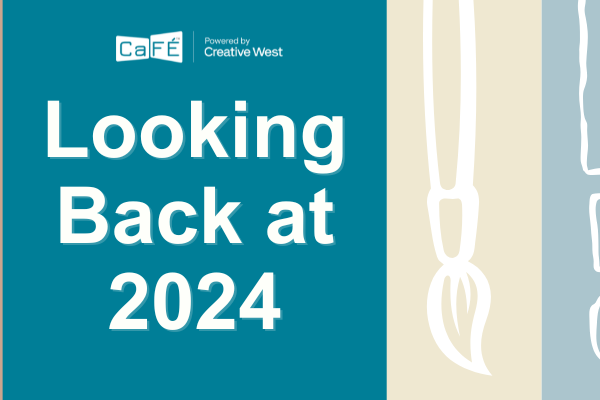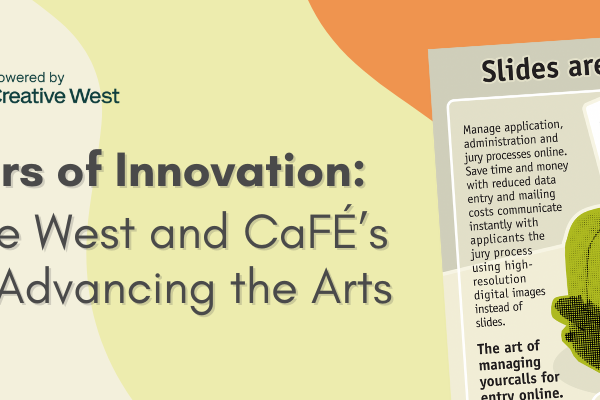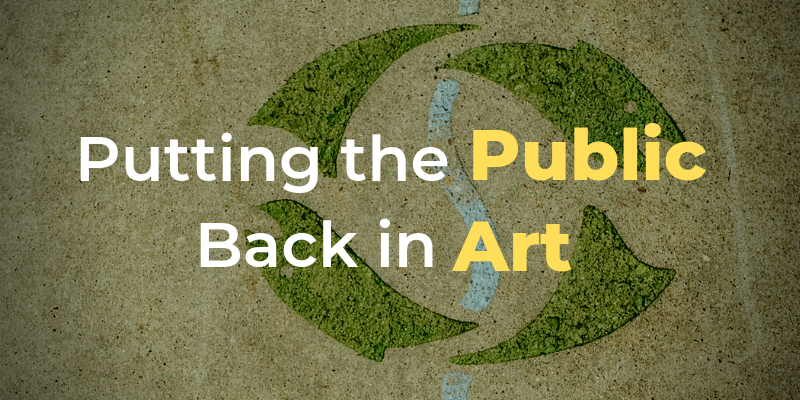
Hi! My name is Natalie and I am a customer experience coordinator at WESTAF, where I help artists with their accounts, portfolios, submissions, and general questions.
Public art is such an incredible thing. I know that sounds like an obvious statement to make, but it is the best way I can sum up my feelings about a recent public art photo walking tour I took around the city of Denver. While in pursuit of the public art scattered around the city, I had no idea that my perspective on, not only this type of art, but the city itself was about to be profoundly changed. What started as a simple photo walking tour for public art pieces quickly became a reintroduction to a city I’ve always known, but wanted to reacquaint myself with as it continues to grow.
The contributions these installations make to our open city spaces go deeper than aesthetics. In the simplest form, this art possesses the ultimate power of connection. It connects us to places, history, culture, and community. To see an artist’s perspective of a community mirrored through his or her physical creation can shift a viewer’s personal mindset. This experience can be inspirational, or even make you rethink your own perspective. In my time spent photographing these pieces, I saw each artwork through many lenses of life. In particular, Common Ground by Barbara Grygutis pulled me in. A sprawling structure at the center of Commons Park in downtown Denver, it is impossible to miss. If you look through the windows cut through the stone, they serve as the perfect window frames for the surrounding landscape.
To a few children, the spaces of The Elements: Earth, Air, Fire, and Water by Nancy Lovendahl serve as great places for play or a game of hide-and-go-seek! To a group of women out for a morning walk, the same spot became a place to catch up with each other, to rest and even to meditate. Their enthusiasm rubbed off on me, and I found myself sitting on the edge of the trail, studying the stone in detail. Suddenly it was late morning and time to move on to the next piece, but not without with a new realization that herein lies the beauty of this breed of art:t reflects the people of the community that it inhabits.
The pieces that most caught my eye were created by artists who pull inspiration from their surroundings. What better way to bring the familiarity of nature back into our city spaces? Common Ground by Barbara Grygutis uses local stone to produce a structure that mimics the mountain ranges in the distance and helps make an urban park feel more like home. Just below the stairs of the Millenium Bridge is a forest of red in the middle of a busy plaza. If you watch closely, you can even see reeds of The Red Forest by Konstantin Dimopoulos swaying in the breeze, bringing a sense of calm to an otherwise bustling area. As I walked from one creation to the next, I started to feel the bond to my hometown and community grow stronger.
Through the rest of the afternoon, I found myself wanting to revisit these places, feeling captivated by the new and abstract feeling of home. This art serves as a drawing force for the people whose lives are enriched by it. As I photographed each work of art, I couldn’t help but be drawn not only to the art itself, but to the ways other people were interacting with and affected by it. Looking through these photos again, I’m reminded of the amazing impact a piece of public art can have on a place. Whether used in revitalizing spaces or furthering the development of our communities, art is one of the most powerful tools for telling the story of an area’s unique history while fitting seamlessly into our evolving society.
By giving us all the chance to discover more beauty and strengthen our bond to our environment and each other, public art pieces serve as the ever-present thread that weaves our communities together. We find this type of art in particular so approachable because it was created to be approached. There are no tickets to buy and these works are viewable at any time of the day. All we need to do is slow down and take a closer look.
Do you know of any amazing public art in your city, or want to go on a photo walk of your own? It is one of the best ways to get to know your city and your community! Visit the Public Art Archive to find public art near you.
Written by Natalie Scherlong

